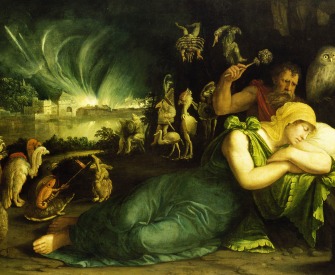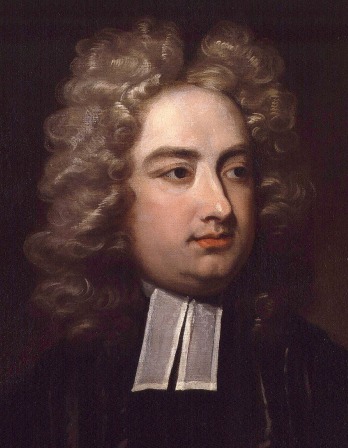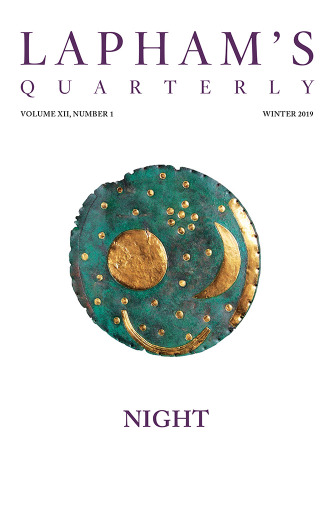About halfway through September, I discovered living creatures in rain, which had stood but a few days in a new tub that was painted blue within. This observation provoked me to investigate this water more narrowly; and especially because these little animals were, to my eye, more than ten thousand times smaller than the animalcule that Jan Swammerdam has portrayed, and called by the name of water flea, or water louse, which you can see alive and moving in water with the bare eye.
Of the first sort that I discovered in the said water, I saw, after divers observations, that the bodies consisted of five, six, seven, or eight very clear globules, but without being able to discern any membrane or skin that held these globules together, or in which they were enclosed. When these animalcules bestirred themselves, they sometimes stuck out two little horns, which were continually moved, after the fashion of a horse’s ears. The part between these little horns was flat, their body else being roundish, save only that it ran somewhat to a point at the hind end, at which pointed end it had a tail near four times as long as the whole body, and looking as thick, when viewed through my microscope, as a spider’s web. At the end of this tail, there was a pellet of the bigness of one of the globules of the body; and this tail I could not perceive to be used by them for their movements in very clear water. These little animals were the most wretched creatures that I have ever seen; for when, with the pellet, they did but hit on any particles or little filaments (of which there are many in water, especially if it has but stood some days), they stuck entangled in them, and then pulled their body out into an oval and did struggle by strongly stretching themselves to get their tail loose, whereby their whole body then sprang back toward the pellet of the tail, and their tails then coiled up serpent-wise, after the fashion of a copper or iron wire that, having been wound close about a round stick, and then taken off, kept all its windings. This motion, of stretching out and pulling together the tail, continued. I have seen several hundred animalcules caught fast by one another in a few filaments, lying within the compass of a coarse grain of sand.
I also discovered a second sort of animalcules, whose figure was an oval; and I imagined that their head was placed at the pointed end. These were a little bit bigger than the animalcules first mentioned. Their belly is flat, provided with divers incredibly thin little feet, or little legs, which were moved very nimbly, and which I was able to discover only after sundry great efforts, and wherewith they brought off incredibly quick motions. The upper part of their body was round and furnished inside with eight, ten, or twelve globules; otherwise these animalcules were very clear. These little animals would change their body into a perfect round, but mostly when they came to lie high and dry. Their body was also very yielding, for if they so much as brushed against a tiny filament, their body bent in, which bend also presently sprang out again, just as if you stuck your finger into a bladder full of water and then, on removing the finger, the inpitting went away. Yet the greatest marvel was when I brought any of the animalcules on a dry place, for I then saw them change themselves at last into a round, and then the upper part of the body rose up pyramid-like, with a point jutting out in the middle; and after having thus lain moving with their feet for a little while, they burst asunder, and the globules and a watery humor flowed away on all sides without my being able to discern even the least sign of any skin wherein these globules and the liquid had, to all appearance, been enclosed.
From a letter to the Royal Society. Born during the Dutch golden age, Leeuwenhoek was sixteen when he first encountered a simple microscope—a mounted glass lens—while working for a cloth merchant in Delft. After reading Robert Hooke’s Micrographia while on a trip to London, he expanded his explorations in microscopy and in 1674 began recording his observations of “animalcules” in letters to Henry Oldenburg, secretary of the Royal Society. This 1676 letter is now considered to have birthed protozoology and bacteriology.
Back to Issue





